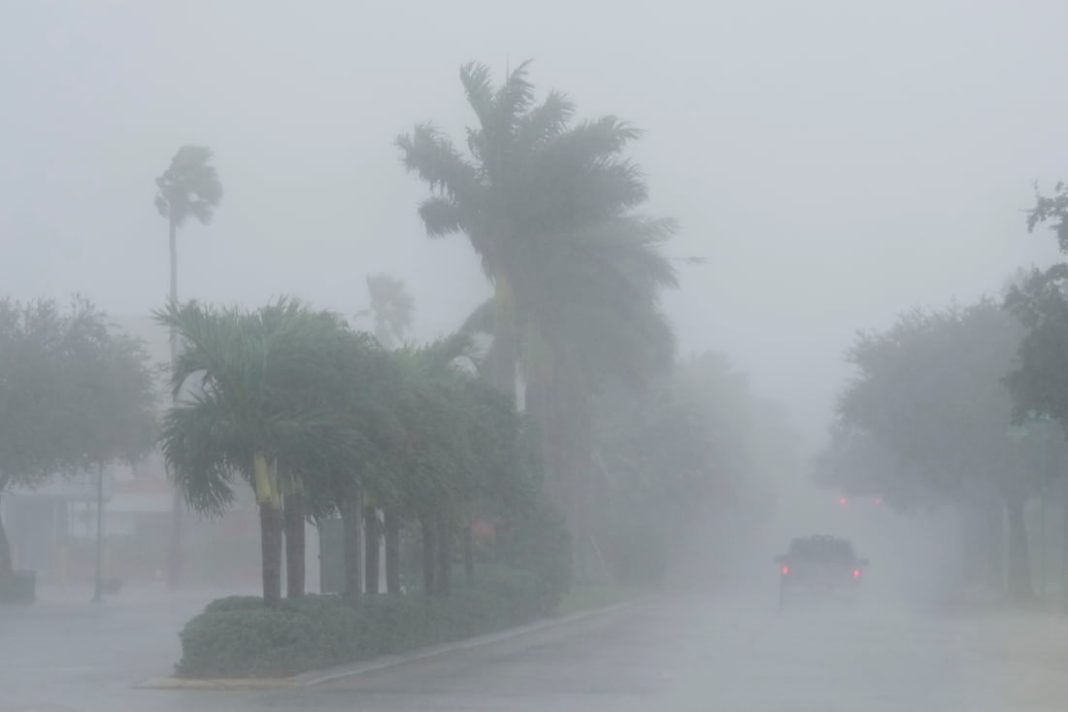An expanding Hurricane Milton has made landfall on Florida’s west coast, spawning tornados and lashing the region with rain as it threatens the Tampa Bay area, where it could deliver a life-threatening surge of seawater.
In a state already battered by Hurricane Helene two weeks ago, as many as two million people were ordered to evacuate, and millions more live in the projected path of the storm.
Officials issued increasingly dire warnings on Wednesday as landfall, expected on Wednesday evening, drew closer.
President Joe Biden urged people to follow local safety recommendations.
“It’s literally a matter of life and death,” Biden said at White House briefing.
Much of the southern US experienced the deadly force of Hurricane Helene less than two weeks ago as it cut a swath of devastation through Florida and several other states. Both storms are expected cause untold billions of dollars in damage.
Fuelled by unusually warm waters in the Gulf of Mexico, the storm was set to hit the Tampa Bay metropolitan area, home to more than three million people, as a major hurricane with a huge footprint.
Tropical force winds were engulfing most of the state.
While Milton slightly weakened on Wednesday afternoon to a Category 3 hurricane, the third-highest level, it was growing in size as it approached Florida and remained extremely dangerous with maximum sustained winds of 195km/h, the hurricane centre said.
Milton was expected to maintain hurricane strength as it crossed the Florida peninsula, posing storm-surge danger on the state’s Atlantic coast as well.
The National Weather Service confirmed at least 16 tornadoes in Florida on Wednesday, and more were expected into the early hours of Thursday.
While human evacuees jammed the highways and created petrol shortages, animals including African elephants, Caribbean flamingos and pygmy hippos were riding out the storm at Tampa’s zoo.
Nearly a quarter of Florida’s gasoline stations were out of fuel on Wednesday afternoon.In Orlando, many people said they had ridden out previous hurricanes, but Milton’s rapid intensification and warnings from officials spurred them into taking unusual precautions for the inland city.
Deanne Criswell, administrator of the Federal Emergency Management Agency (FEMA), said she would travel to Florida on Wednesday and remain there after the storm to help coordinate recovery efforts.
Nearly a quarter of Florida’s petrol stations were out of fuel on Wednesday afternoon.
FEMA has moved millions of litres of water, millions of meals and other supplies and personnel into the area. None of the additional aid will detract from recovery efforts for Hurricane Helene.
Trucks have been running 24 hours a day to clear mounds of debris left behind by Helene before Milton potentially turns them into dangerous projectiles, Florida Governor Ron DeSantis said.
Major Florida theme parks shuttered ahead of the storm, with Disney World, Universal Studios and SeaWorld all closing their doors later on Wednesday.
Nineteen hospitals were evacuated, the Florida Hospital Association said. Mobile homes, nursing homes and assisted-living facilities faced mandatory evacuation.
Milton became the third-fastest intensifying storm on record in the Atlantic, growing from a Category 1 to a Category 5 in less than 24 hours.
“These extremely warm sea surface temperatures provide the fuel necessary for the rapid intensification that we saw taking place to occur,” said climate scientist Daniel Gilford of Climate Central, a nonprofit research group.
“We know that as human beings increase the amount of greenhouse gases in the atmosphere, largely by burning fossil fuels, we are increasing that temperature all around the planet,” Gilford said.



